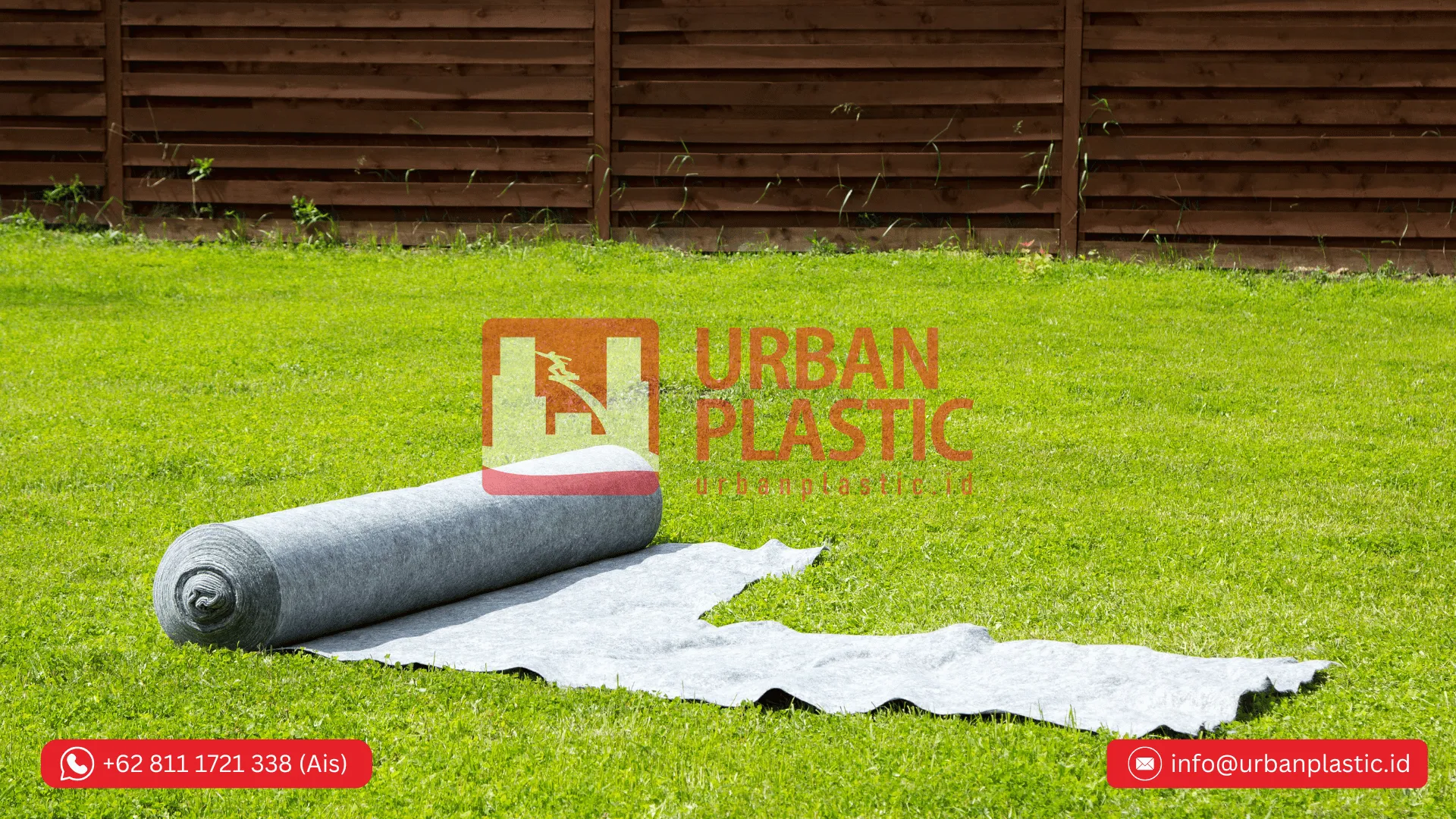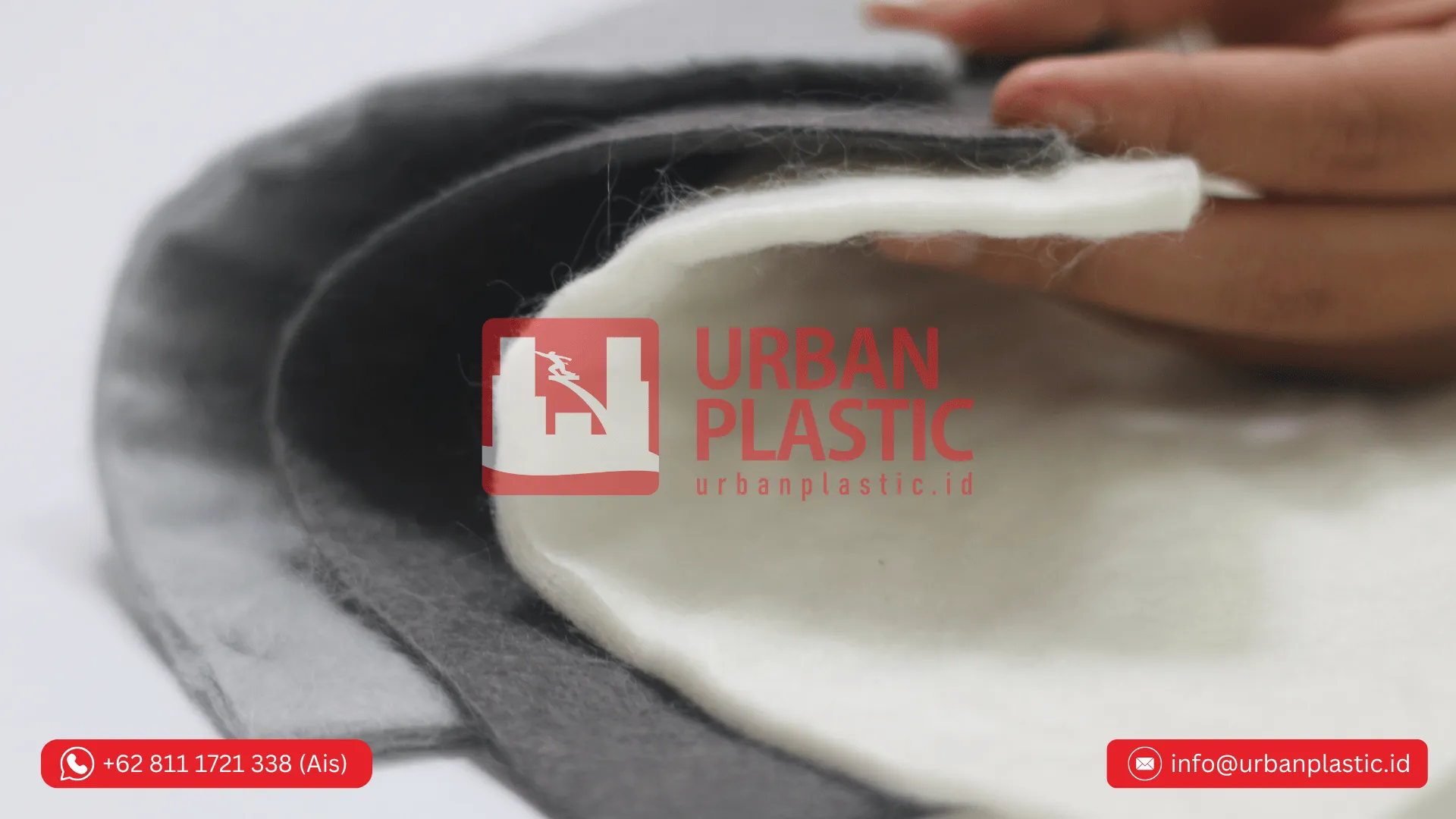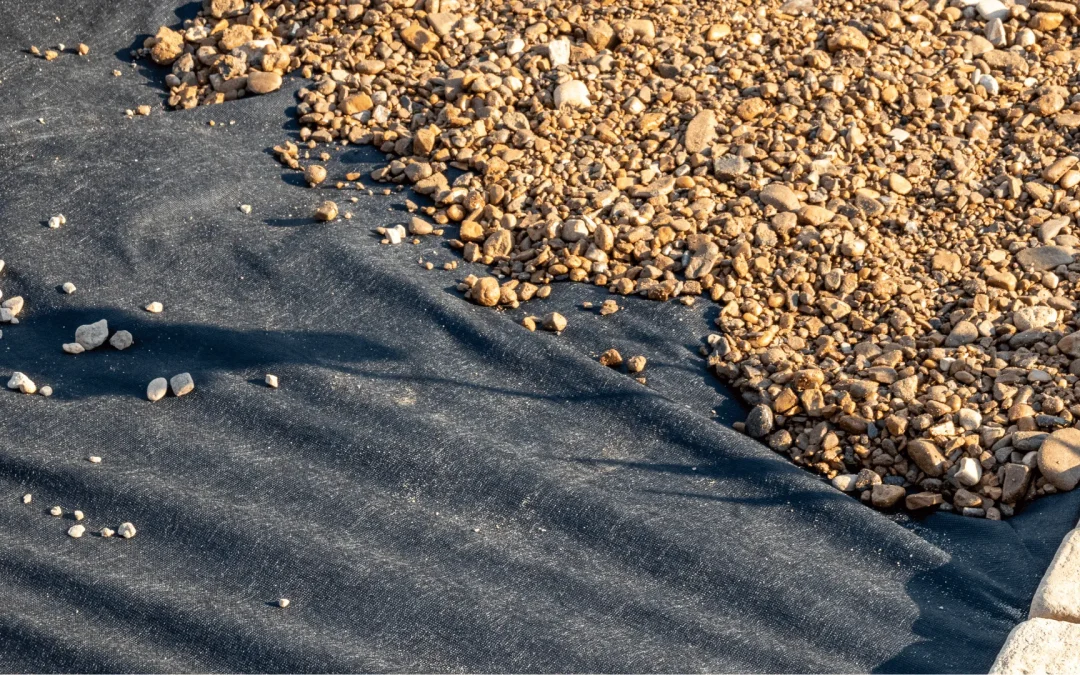Geotextile for vegetable gardens provides a functional alternative to traditional gardening practices. This revolutionary fabric protects the soil and helps it retain moisture. It also smothers weeds, making it a must-have for any gardener looking to increase productivity.
By holding the soil in place and providing structure, geotextile reduces the need for herbicides and encourages healthier plant growth. Its versatility fits raised beds to pathways, making it easy for gardeners to have low-maintenance, sustainable spaces. With geotextile, you can grow a thriving vegetable patch without the hassle.
Understanding Geotextiles
What are Geotextiles?
Geotextiles are permeable fabrics utilized in gardening and landscaping to improve soil stability, drainage, and filtration. These fabrics are typically made from synthetic materials, like polypropylene and polyester. They are important for regulating interactions between soil and water. There are two primary types of geotextiles: woven and non-woven.
Woven geotextiles are made of interlaced threads, which gives them high tensile strength and durability, suitable for high-stress applications. Non-woven geotextiles are made from bonded fibres, providing exceptional drainage and filtration properties. Both types help drainage in garden beds. They let the water flow freely — but prevent the soil from washing away.
Types of Geotextiles
In vegetable gardening, several types of geotextiles can be employed, each with unique properties suited for specific applications.
- Known for their strength and durability, these fabrics are ideal for stabilising soil in areas with heavy foot traffic or erosion-prone zones.
- These are excellent for drainage and moisture retention, making them suitable for raised beds or areas where soil saturation is a concern.
- Lightweight yet resilient, spunbonded geotextiles are often used as weed barriers while allowing air and water to penetrate.
When choosing a geotextile for your veggie garden, look for characteristics like permeability and durability. For example, if you need something that retains high water and aeration for root development, a non-woven would be helpful. If you require structural support in a sloped area, woven geotextiles would be suitable.
Geotextile vs Landscape Fabric
Both geotextiles and traditional landscape fabrics fulfill similar roles in gardening, but they fulfill those roles very differently. Landscape fabric controls weeds by preventing them from getting light. It doesn’t provide the same drainage or soil protection as geotextiles.
One big advantage of geotextiles is that they can hold moisture. Unlike regular landscape fabric that can suffocate the soil, geotextile lets the soil breathe. This feature is important for vegetable gardens where the right moisture levels are essential for healthy plant growth. Compared to traditional landscape fabrics, geotextiles typically have a longer lifespan due to their durable materials.
In some situations, one material is better than another. If your main goal is to suppress weeds, landscape fabric could work. If you care about soil health or drainage, you might want to look elsewhere. To build a successful vegetable garden, prioritize soil health and smart water use. If that’s the case, picking geotextiles is a smart idea.
Benefits of Geotextiles in Gardens
1. Prevent Soil Erosion
Geotextiles act as a strong barrier to soil movement and loss, stabilizing slopes and inhibiting runoff. They form a protective covering that preserves garden beds. This minimizes erosion even during heavy rains or irrigation. It reduces erosion and preserves your topsoil. It also keeps essential nutrients available for plant growth. Over time, less erosion leads to more fertile, more productive soil — and that’s great for a vegetable garden. For example, using geotextiles on hilly spots prevents soil from being displaced, making for better gardening designs.
2. Retain Moisture Effectively
Geotextiles help garden beds retain moisture. They use capillary action to pull water up from below the fabric into the soil above. This mechanism helps keep moisture levels in check, which is critical for plant health and growth. When used properly, geotextiles can cut back how often you have to water, particularly in drier climates. Gardeners can layer geotextiles underneath mulch or other organic materials to help retain moisture. This technique lets water in but minimizes evaporation.
3. Suppress Weeds Naturally
Geotextiles have a huge advantage — they effectively stifle weed growth. Best of all, they do this without using chemical herbicides. Geotextiles eliminate sunlight, making it hard for seeds to germinate, which keeps most weeds at bay. They still allow water and nutrients to pass through to the soil. Gardeners can stack this effect by layering geotextiles with mulch, which forms another weed barrier. This method encourages healthier plants and can also be a cost-effective way of managing weeds in the long term.
4. Maintain Soil Structure
Geotextiles help maintain soil structure and prevent compaction, critical to the formation of roots. They promote aeration within the soil while supporting beneficial organisms and creating soil biodiversity. Healthy soil structure encourages good drainage and makes it easier for plants to absorb nutrients so that robust growth happens naturally over time. By putting geotextiles in your gardening plan, you’ll make the soil better, and your plants will flourish.
5. Reduce Herbicide Use
This means using geotextiles to control weeds in vegetable beds works with organic gardening. The environmental benefits are huge; cutting down on chemical inputs protects local ecosystems and healthier produce. You can find plenty of flourishing gardens that have gone for geotextile solutions and eradicated herbicides entirely. This transition can potentially translate into lower costs related to less herbicide use in the long run.

Versatile Uses of Geotextiles
Applications in Raised Beds
Geotextiles offer an enhanced functionality of raised garden beds. They create a barrier that keeps soil separate from base materials like gravel or wood. The separation is very important. It keeps soil from mixing with these materials, which can cause nutrient loss and drainage issues.
To install geotextiles in raised bed construction, follow these guidelines:
- Determine the size of your raised bed and cut the geotextile accordingly.
- Place the geotextile at the bottom of the bed, ensuring it covers all sides.
- Use staples or landscape pins to secure the edges in place.
- Fill the bed with your chosen soil mix on top of the geotextile.
The benefits of this installation are significant. Improved drainage occurs because water flows through the geotextile, and essential moisture is retained within the soil. This balance encourages healthy root growth and prevents them from becoming over-saturated.
Using in Garden Pathways
There are many benefits to using geotextiles in your garden paths. One major advantage is that they can prevent weeds in these areas, which cuts down on maintenance time and effort. Geotextiles, by serving as a barrier, prevent weeds from growing through to the surface.
For effective pathway creation, consider layering geotextiles with gravel or mulch.
- Prepare the area: Clear any existing vegetation and level the ground.
- Place the geotextile fabric down, covering the entire pathway area.
- Add gravel or mulch: Layer gravel or mulch on top of the geotextile to create a durable surface.
This method strengthens the function and adds to the aesthetics of garden design. Straight lines formed by defined paths will direct visitors through your garden while giving it that neat, manicured look.
Employing as Mulch
Geotextiles can do a good job as a replacement for organic mulch in your garden. They also hold on to moisture by limiting evaporation, so plants get enough hydration during drier times. They choke the weeds they suppress, which are essential for healthy plant structures.
To maximise performance, layer geotextiles with organic mulch:
- Lay down the geotextile over your garden beds.
- Spread a layer of organic mulch on top, such as wood chips or straw.
This combo amps up moisture retention. It also keeps your mulch lasting longer than regular organic options do alone. Traditional mulches decompose and need to be replaced frequently, but geotextiles offer long-lasting support and protection for your plants.

Sustainable Gardening with Geotextiles
Eco-Friendly Fabric Options
Geotextiles, especially those composed of recycled materials, provide an eco-friendly option to conventional gardening cloths. These earth-friendly options minimize waste. They also enhance soil health by enabling water and nutrients to penetrate well. Biodegradable geotextiles provide great benefits in organic gardening. They break down over time, enriching the soil naturally, without any harmful chemicals. Choosing sustainable materials is important, so opt for products that are certified organic or have minimal environmental impact.
For an eco-friendly place to source geotextiles, try local suppliers who focus on sustainability. Online marketplaces have a wide range, including options made from natural fibres like jute or coir. Review the product specifications to ensure that the geotextiles will serve your garden’s purposes. This will help you remain true to your commitment to sustainability.
Tips for Effective Mulching
Applying geotextiles as mulch can significantly improve moisture retention and weed control in your garden. For the best results, aim for a thickness of around 5-10 cm when you lay down the fabric. Layering techniques can also increase effectiveness. For a more natural look and additional benefits, try adding organic materials to the top of the geotextile, such as wood chips or straw.
Regular maintenance is necessary for mulched areas. Look for signs of wear or degradation in the fabric. If it starts to get stale, replace it as needed to keep it working. Seasonal adjustments may be needed depending on the crops you’re growing. For example, in the summer months, make sure the mulch is intact to avoid cooking the soil and to keep moisture in.
Lining and Filling Planters
Geotextiles provide fantastic drainage and aeration when used for lining and filling planters. The ‘breathable’ fabric is porous enough to let excess water escape and helps keep essential nutrients within the soil. This is especially useful if you’re container gardening since it can help prevent root rot caused by drainage issues.
To line planters effectively, follow these steps:
- Measure the planter: Determine the dimensions of your planter to cut the geotextile accordingly.
- Use sharp scissors to cut a piece of geotextile large enough to cover the bottom and sides of the planter.
- Position the fabric inside the planter, ensuring it fits snugly against all surfaces.
- Add soil: Fill with potting mix or garden soil, taking care not to disturb the fabric.
- Now your planter is ready for planting!
Geotextiles increase function in many planter iterations. They also help to prolong the life of your containers by preventing soil erosion and facilitating drainage.
Conclusion
Geotextiles are a viable and sustainable solution for veggie gardens that improve soil health and growth. Their benefits, from weed suppression to improved drainage, make them a valuable addition to any gardening toolkit. Whether you’re an expert gardener or a beginner, you can improve your garden health by adding geotextiles. They can result in healthier plants and higher yields!
As you plan your next gardening project, consider how geotextiles fit into your strategy. They aren’t just a fad; they’re a good investment for anyone who wants to supercharge their garden. Delve into the science of geotextiles and experience how they can transform your vegetable garden.
For more information about Geotextile for Gardening please contact: Whatsapp/Mobile Phone: +62 811 1721 338 (Ais) or Email: info@urbanplastic.id.

